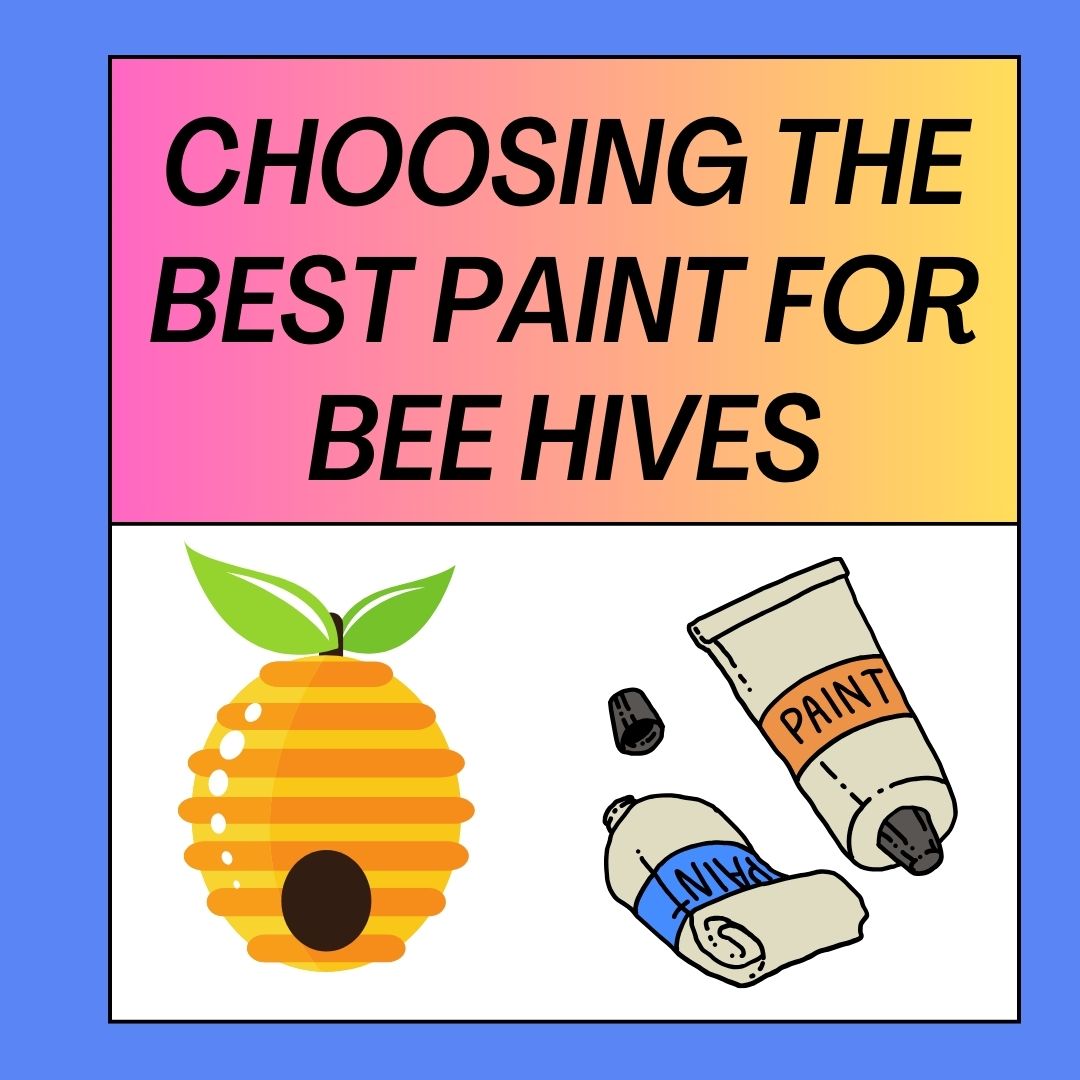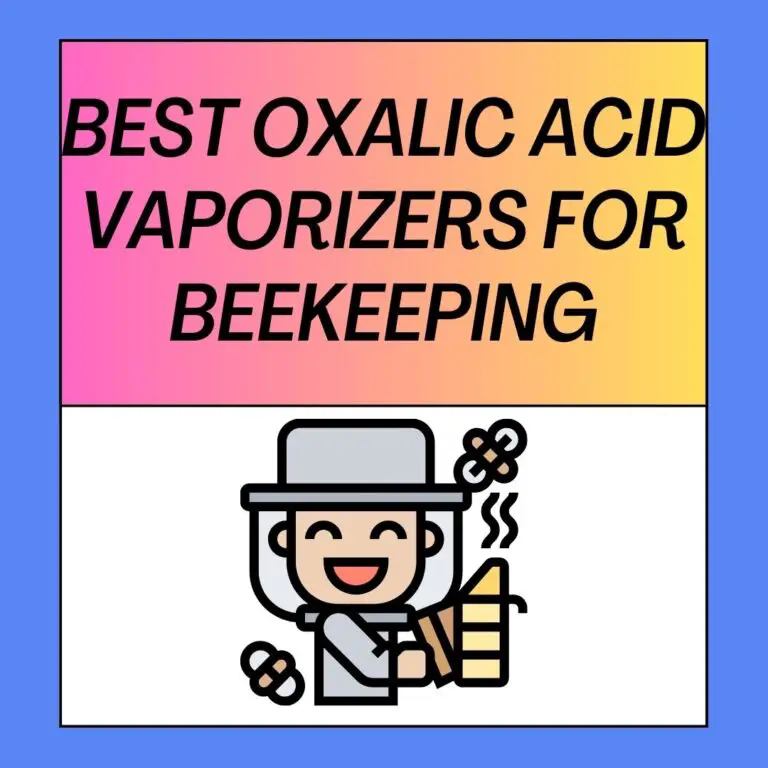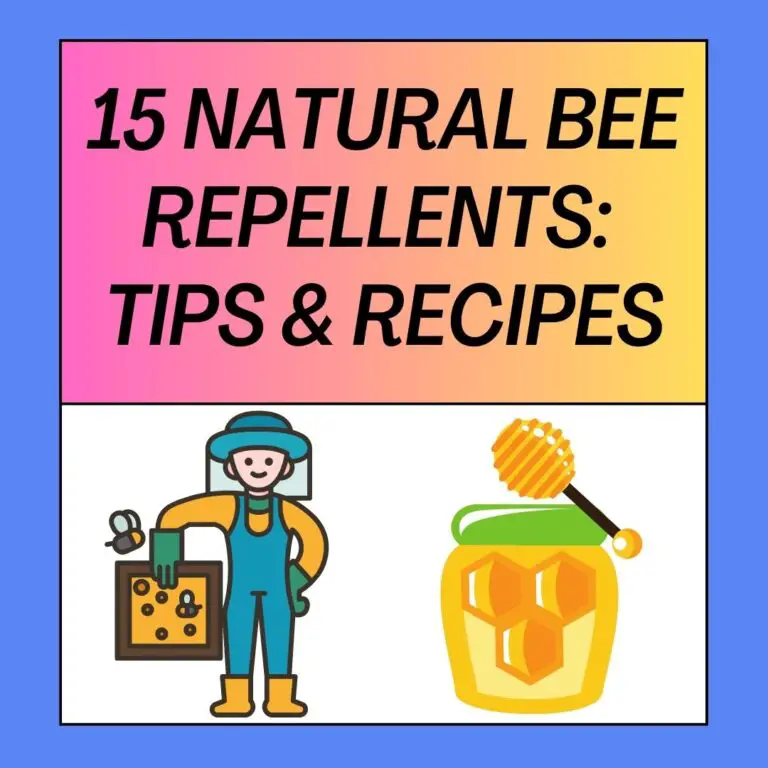
Painting your bee hives not only adds a decorative touch but also helps protect the wood from the elements, ensuring the longevity of your hives. However, when it comes to bee hives, you must be mindful of the type of paint you use to avoid any harm to your bees.
Choose The Best Paint For Bee Hives:
- Water-Based Exterior Paint:
- Recommended Type: Latex or acrylic exterior paint.
- Advantages: Water-based paints are widely considered the safest option for bee hives. They are low in volatile organic compounds (VOCs) and have low toxicity levels.
- Considerations: Look for paints labeled as “non-toxic” or “safe for beehives” to ensure they are bee-friendly. Water-based paints are available in a variety of colors, allowing you to customize your hives.
- Milk Paint:
- Recommended Type: Bee-friendly milk paint.
- Advantages: Milk paint is an all-natural, environmentally friendly option that is safe for bees. It comes in powdered form and is mixed with water before application.
- Considerations: Milk paint provides a unique, rustic appearance and is available in various colors. However, it may require more frequent touch-ups than other paint types.
- Linseed Oil Paint:
- Recommended Type: Exterior-grade linseed oil paint.
- Advantages: Linseed oil paint is made from natural ingredients and is generally safe for bees. It offers good protection against the weather.
- Considerations: Linseed oil paint tends to have a longer drying time compared to other paints. Ensure it is thoroughly dried before introducing bees to the hives.
- Exterior Stains:
- Recommended Type: Water-based or oil-based exterior wood stains.
- Advantages: Exterior stains penetrate the wood, providing protection without forming a thick film. They come in various finishes, from clear to solid colors.
- Considerations: Opt for stains labeled as “safe for beehives” and check their VOC content. Stains allow the wood’s natural grain to show through while offering weather resistance.
- Beeswax or Propolis Coating:
- Recommended Type: A mixture of beeswax and propolis.
- Advantages: Some beekeepers prefer to avoid traditional paints altogether and instead use a coating made from a mixture of beeswax and propolis. This coating is entirely natural and is not harmful to bees.
- Considerations: While this option provides a natural appearance and is safe for bees, it may require more frequent reapplication than paint.
- Avoid Oil-Based and High-VOC Paints:
- Caution: Oil-based paints and high-VOC (volatile organic compound) paints should be avoided for bee hives. These paints can emit fumes that may harm your bees and contaminate honey.
- Preparation and Safety:
- Preparation: Regardless of the paint type, proper surface preparation is essential. Sand the wood to create a smooth surface, and remove any dust or debris before painting.
- Safety: When painting bee hives, ensure that the paint has fully dried and cured before introducing bees. Ventilate the painted hives to allow any residual fumes to dissipate.
Remember that the primary goal when painting bee hives is to protect the wood while ensuring the safety and health of your bees. Always prioritize bee-friendly and non-toxic paint options, and consult with experienced beekeepers for additional guidance on hive maintenance.
How to Paint Bee Hives and Boxes: Step-by-Step Guide
Painting your bee hives is an essential part of hive maintenance. It not only helps protect the wood from the elements but also allows you to express your creativity. Here’s a step-by-step guide on how to paint bee hives properly:
Materials You’ll Need:
- Exterior-grade paint or stain (preferably water-based or milk paint)
- Paintbrushes or paint sprayer
- Sandpaper (medium and fine grit)
- Primer (if necessary)
- Drop cloths or newspapers
- Painter’s tape
- Safety equipment (gloves, safety glasses, mask)
- Hive components (boxes, supers, lids, bottom boards)
- Cleaning supplies (tack cloth, mild detergent, water)
10 Steps to Follow
Step 1: Prepare the Work Area
- Choose a well-ventilated and dust-free area for painting. It’s best to work outdoors or in a well-ventilated garage.
- Lay down drop cloths or newspapers to protect the surface under your hives.
- Ensure that your hive components are clean and free from debris.
Step 2: Sand the Wood
- Start by lightly sanding all the wooden surfaces of your hive components. Use medium-grit sandpaper to smooth rough areas and remove any loose paint or dirt.
- Follow up with fine-grit sandpaper to create a smooth surface for painting.
- Wipe off the dust with a tack cloth or a damp cloth and allow the wood to dry completely.
Step 3: Apply Primer (If Necessary)
- If your hive components are raw or have never been painted, it’s a good idea to apply a primer. Primer helps the paint adhere better and provides an even finish.
- Apply the primer evenly and allow it to dry according to the manufacturer’s instructions.
Step 4: Mask Off Areas
- To achieve clean lines and prevent paint from getting on unwanted areas, use painter’s tape to mask off any sections you don’t want to paint, such as entrances and edges.
Step 5: Start Painting
- Begin applying the paint or stain to your hive components. If you’re using a paintbrush, use smooth, even strokes in the direction of the wood grain.
- If you have a paint sprayer, follow the manufacturer’s instructions for proper usage. A sprayer can provide a more even and efficient coat of paint.
- Apply multiple thin coats rather than one thick coat for better durability and coverage.
- Allow each coat to dry completely before applying the next one. This may take a few hours to overnight, depending on the paint or stain used.
Step 6: Paint the Interior
- While painting the exterior is essential for protection, some beekeepers also choose to paint the interior of the hive bodies. This can help with moisture control and sanitation.
- Use a light-colored, non-toxic paint for the interior to make it easier to inspect your bees.
Step 7: Remove Masking Tape
- Carefully remove the painter’s tape once the paint is dry to the touch. This prevents the tape from peeling off any paint along with it.
Step 8: Allow Proper Drying Time
- After the final coat, give your painted bee hives ample time to dry and cure. Follow the manufacturer’s instructions for the specific paint or stain you used.
- Ensure that there are no lingering fumes or odors from the paint before introducing your bees.
Step 9: Reassemble the Hive
- Once your hive components are completely dry and safe for your bees, reassemble the hive. Ensure that everything fits snugly and securely.
Step 10: Maintenance and Inspection
- Regularly inspect your painted bee hives for any signs of wear or damage to the paint. Touch up any areas that may need it to maintain the hive’s protection.
Additional Tips:
- Choose light colors for your hives, as they reflect sunlight and help keep the hive cooler.
- Avoid using paints or stains with high VOC content, as these can be harmful to your bees.
- Prioritize the health and safety of your bees when selecting paint or stain products.
By following these steps and using bee-friendly paint or stain, you can maintain the integrity of your bee hives while ensuring the well-being of your bee colony.
Do Some Paint Colors Attract Bees?
The color of your beehive can have an impact on how bees interact with it. Bees are attracted to certain colors, and their preferences can vary depending on the species. Here’s what you need to know about bee-attractive colors for beehives:
- White: White is a popular color for beehives because it reflects sunlight and helps keep the hive cooler during hot weather. It’s also less likely to absorb heat, which can be beneficial for the bees.
- Light Pastels: Colors like light blue, light green, and pale yellow are generally attractive to bees. These colors are reminiscent of the flowers they forage on and can help bees locate the hive more easily.
- Natural Wood: Some beekeepers prefer to leave their hives unpainted, allowing the natural wood color to show. While this isn’t a color in the traditional sense, it can be appealing to bees and beekeepers alike. However, natural wood may require more maintenance.
- Avoid Dark Colors: Dark colors, such as black or dark brown, are less attractive to bees. Dark hives can absorb heat and become uncomfortably warm for the bees, especially in sunny climates.
- Avoid Vibrant Colors: Extremely vibrant or fluorescent colors may confuse bees or even deter them from entering the hive. It’s best to stick to more natural and subtle shades.
Remember that while color can influence bee behavior to some extent, other factors like hive location, hive health, and forage availability play more significant roles. The color choice should prioritize the well-being of the colony and the beekeeper’s preferences while keeping in mind the local climate.
What Hive Surfaces to Paint?
When it comes to painting beehives, certain hive components benefit from a coat of paint or wood preservative more than others. Here’s a guide to which hive surfaces to paint:
- Exterior Surfaces: It’s essential to paint the exterior surfaces of your hive components, including hive bodies, supers, and outer covers. Painting these surfaces helps protect the wood from the elements, extending the life of your hives.
- Bottom Boards: Painting the bottom boards is optional but can provide added protection, especially if your hives are situated in a damp or humid environment. It’s more common to leave the bottom boards unpainted.
- Interior Surfaces: While painting the interior surfaces of hive bodies is optional, some beekeepers choose to do so. A light-colored, non-toxic paint can help with moisture control and sanitation. Make sure any paint used on the interior is safe for bees.
- Frames and Foundation: Frames and foundation sheets should not be painted, as the bees will build comb on them. Painting these components can interfere with comb construction and bee activities.
- Entrance Reducers: Entrance reducers are typically made of wood and are often painted along with the hive bodies. However, the painted entrance should be located outside the hive, leaving the interior unpainted.
- Lids: The outer covers or lids of hives should be painted to protect them from weathering and moisture.
Should I Hot Wax Dip My Beehives
Hot wax dipping, also known as paraffin wax dipping, is a technique used to preserve and protect wooden beehives. While it’s not a common practice among all beekeepers, it can offer several benefits:
Advantages of Hot Wax Dipping:
- Wood Preservation: Wax dipping helps seal and protect the wood from moisture, fungal growth, and decay. This can significantly extend the lifespan of your hives.
- Pest Resistance: The wax coating can act as a deterrent to some pests, such as small hive beetles and wax moths. It creates a barrier that makes it more challenging for these pests to infiltrate the wood.
- Improved Insulation: Wax-coated hives may have better insulation properties, helping to regulate the temperature inside the hive. This can be particularly beneficial in extreme weather conditions.
- Ease of Cleaning: The smooth, wax-coated surfaces are easier to clean, as propolis and other substances are less likely to adhere to the wood.
Considerations and Drawbacks:
- Cost: Hot wax dipping can be expensive, both in terms of equipment and the wax itself. You’ll need a large vat or tank to dip the hive components.
- Labor-Intensive: The process can be labor-intensive, especially for larger apiaries. It requires heating the wax to a specific temperature and dipping each hive component individually.
- Not Always Necessary: In some regions with milder climates, hot wax dipping may not be necessary. The decision to use this method should be based on local weather conditions and hive longevity goals.
- Maintenance: Over time, the wax coating may wear off and require reapplication. The frequency of reapplication depends on factors like weather and hive wear.
In summary, hot wax dipping can be a valuable tool for preserving and protecting your beehives, especially in regions with harsh weather conditions or high pest pressure. However, it’s not a one-size-fits-all solution, and beekeepers should weigh the costs and benefits based on their specific circumstances.
What Does It Cost To Paint Hives?
The cost of painting beehives can vary depending on several factors, including the type of paint or stain used, the number of hives you have, and whether you already have the necessary equipment. Here’s a breakdown of the potential costs:
- Paint or Stain: The cost of the paint or stain itself is a primary expense. Prices vary widely depending on the brand, quality, and quantity you need. High-quality, bee-safe paint or stain may cost more but is recommended for hive health. Expect to spend anywhere from $20 to $50 or more per gallon.
- Painting Equipment: If you don’t already have painting equipment, such as brushes, rollers, or a paint sprayer, you’ll need to factor in these costs. Basic brushes and rollers are relatively inexpensive, while a good quality paint sprayer can range from $50 to $200 or more.
- Primer (If Needed): If you choose to use primer, this will add to the overall cost. Primer prices are similar to paint prices, with an additional $20 to $50 per gallon.
- Safety Gear: Safety equipment like gloves, safety glasses, and a mask should be included in your budget. These items are relatively affordable, with gloves costing around $5 to $15, safety glasses around $5 to $20, and masks around $5 to $15.
- Hive Maintenance: While not a direct painting cost, consider the long-term maintenance savings. Properly painted hives are likely to last longer, reducing replacement costs.
- Labor: If you hire someone to paint your hives, labor costs will be an additional expense. Labor charges can vary widely based on location and the number of hives to be painted.
- Additional Costs: Depending on your specific situation, you may have additional costs, such as repairs or surface preparation if your hives are in poor condition.
The overall cost of painting hives for a small apiary with a few hives can be relatively modest, primarily consisting of paint, equipment, and safety gear. However, for larger operations or if you hire help, the costs can increase significantly. It’s essential to budget for these expenses to ensure the proper care and maintenance of your hives.
What Color to Paint My Beehive?
When choosing a color to paint your beehive, several factors come into play. While there’s no one-size-fits-all answer, consider these guidelines:
- Light Colors: Light colors like white, light blue, light green, and pale yellow are generally recommended. These colors reflect sunlight and help keep the hive cooler during hot weather. Bees are also naturally attracted to lighter shades.
- Avoid Dark Colors: Dark colors, such as black or dark brown, should be avoided. Dark hives can absorb heat and become uncomfortably warm for the bees, especially in sunny climates.
- Natural Wood: Leaving the hive components in their natural wood color is an option. This can create a rustic look and eliminate the need for painting. However, natural wood may require more frequent maintenance.
- Non-Toxic Paint: Regardless of the color you choose, ensure that the paint or stain is non-toxic and safe for bees. Toxic chemicals in the paint can harm the hive and its occupants.
- Personal Preference: Your personal preference and the aesthetics of your apiary also play a role. Some beekeepers prefer the classic look of white hives, while others may opt for more colorful variations.
- Local Climate: Consider the climate in your area. If you’re in a hot region, lighter colors are especially beneficial to prevent hive overheating.
- Visibility: Lighter colors can make it easier for you to spot your hives in the field, which is useful during hive inspections.
Remember that while color choice can influence bee behavior to some extent, other factors like hive location, hive health, and forage availability play more significant roles. The color should prioritize the well-being of the colony and your preferences while keeping in mind the local climate and environment.
Related FAQ About Painting Hives
Should You Paint or Stain Your Beehives?
Whether to paint or stain your beehives depends on your preferences and the specific needs of your apiary. Both methods offer advantages and considerations:
- Painting Beehives:
- Advantages: Paint provides a protective barrier against moisture and weathering. It’s available in a wide range of colors, including light shades that reflect heat. Paint can be easily reapplied or touched up as needed.
- Considerations: Be sure to use non-toxic, bee-safe paint. Paint may need periodic maintenance, including sanding and repainting, to prevent peeling or chipping.
- Staining Beehives:
- Advantages: Stains penetrate the wood, providing long-lasting protection without the risk of peeling or chipping. Some stains offer natural wood tones that beekeepers find aesthetically pleasing. Stains can enhance the wood’s natural beauty.
- Considerations: Stains often have a limited color range, so if you prefer a specific color, staining might not provide that option. Like paint, choose non-toxic stains suitable for beehives.
Do I Need to Paint My Beehive?
Painting your beehive is not an absolute necessity, but it can offer several benefits:
- Protection: Paint provides a protective layer that helps prevent moisture from penetrating the wood. Moisture can lead to rot, mold, and hive damage.
- Weather Resistance: Paint helps beehives withstand the elements, including rain and sunlight. This can prolong the life of your hive components.
- Heat Reflection: Light-colored paint reflects sunlight, helping to keep the hive cooler during hot weather.
- Visibility: Paint can make your hives more visible in the field, making hive inspections and maintenance easier.
While painting isn’t mandatory, it’s a common practice among beekeepers to ensure hive longevity and protection.
What Paint Should Be Used on Beehives?
When choosing paint for your beehive, prioritize non-toxic, bee-safe options. Look for paints that are labeled as safe for children or food contact, as these are less likely to contain harmful chemicals. Water-based paints are generally safer than oil-based ones.
Is It Better to Paint or Wax a Beehive?
Painting and waxing serve different purposes for beehives:
- Painting: Provides a protective layer against moisture and weathering, reflects heat, and offers a wide range of color options. It requires periodic maintenance.
- Waxing: Wax can be applied to wooden hives as a preservative and to maintain the wood’s natural appearance. It doesn’t offer the same level of protection against the elements as paint but can be a more natural and rustic option.
The choice between painting and waxing depends on your hive’s needs and your aesthetic preferences.
What Paint Attracts Bees?
Bees are generally attracted to flowers and nectar, not paint. However, it’s crucial to use non-toxic, bee-safe paint on beehives. Toxic chemicals in paint can harm the hive and its occupants. Bees might explore any new hive modifications, including painted surfaces, but their attraction is more about curiosity than the paint itself. Light-colored paint may be less visually attractive to bees compared to vibrant flowers.






